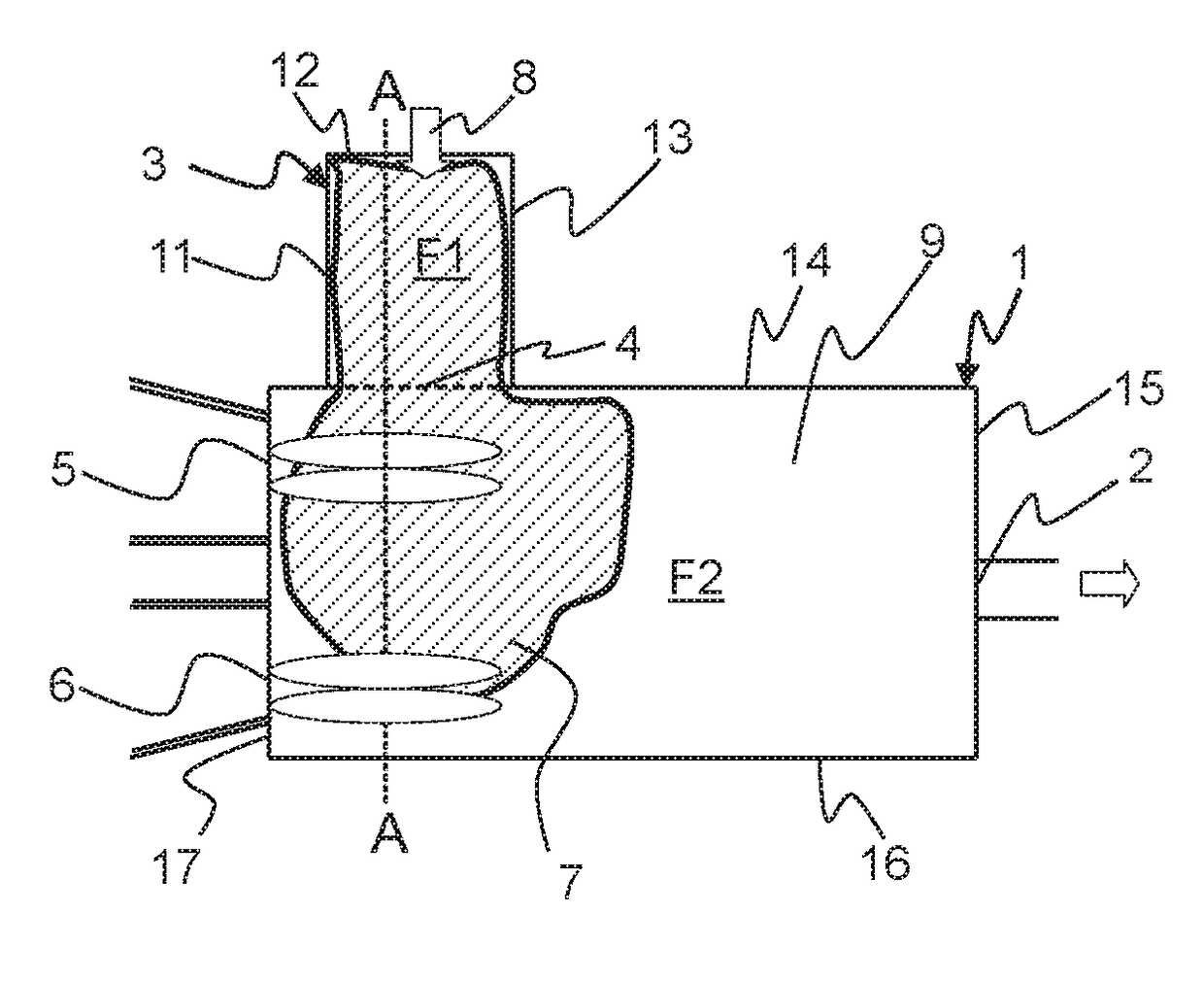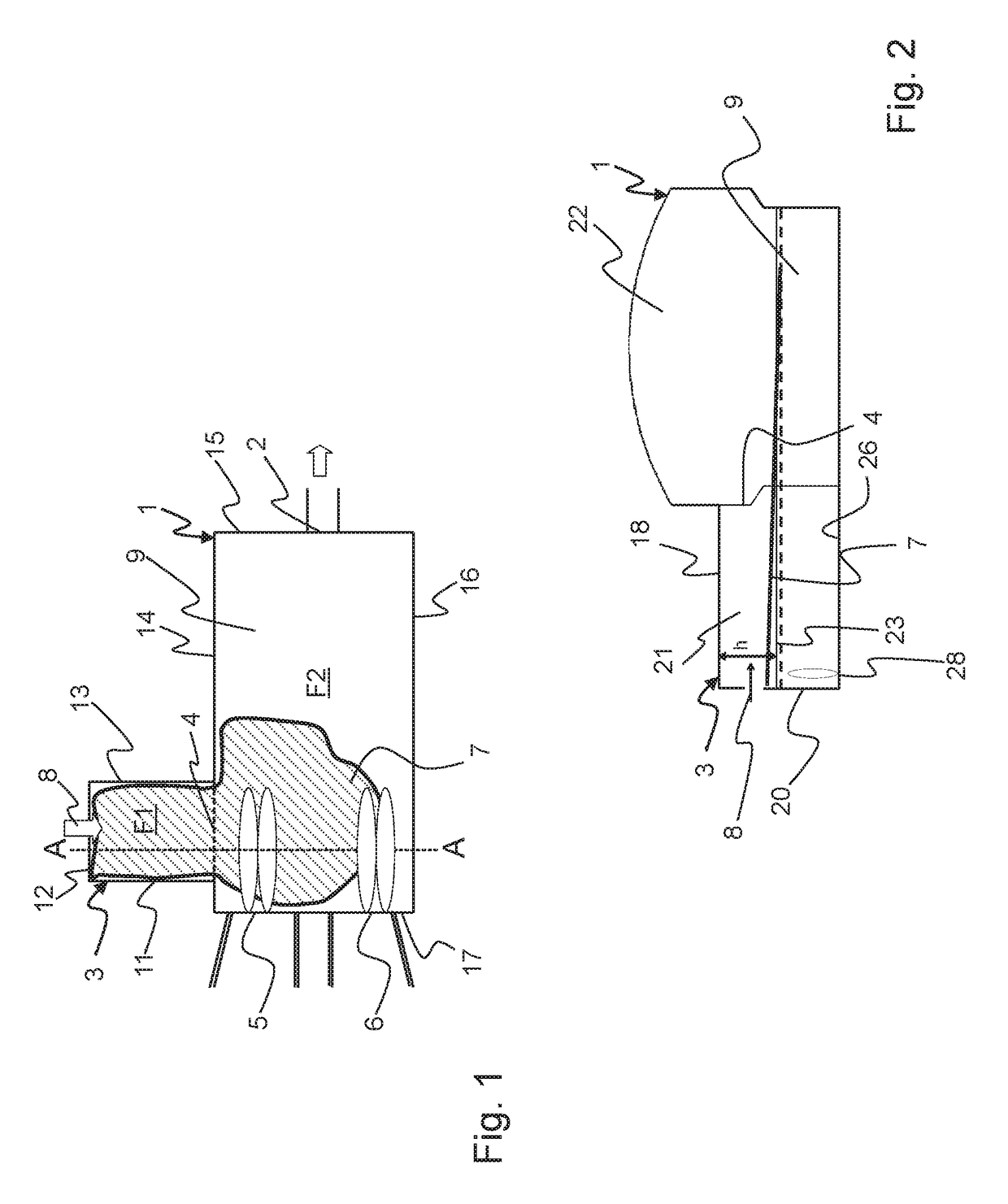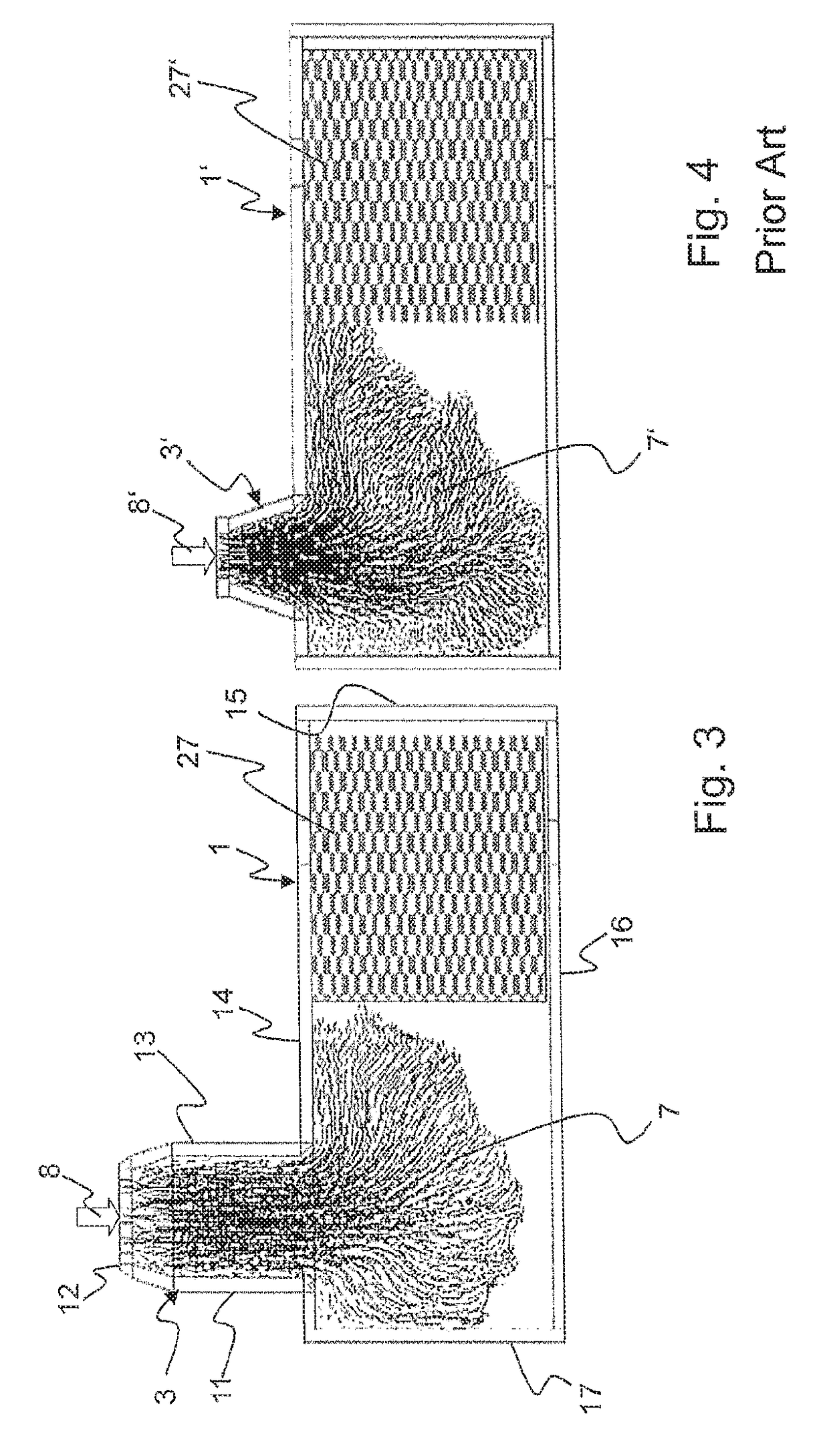Glass melting plant
a glass melting plant and glass technology, applied in glass making apparatus, furnace types, charging furnaces, etc., can solve the problems of increasing theoretical energy consumption in particular, affecting the specific melting performance of glass, and reducing the energy required per ton of glass produced, so as to achieve the effect of increasing specific melting performance and maintaining minimal energy consumption
- Summary
- Abstract
- Description
- Claims
- Application Information
AI Technical Summary
Benefits of technology
Problems solved by technology
Method used
Image
Examples
Embodiment Construction
[0048]FIG. 1 shows a melting tank 1 of a glass melting plant (not shown in more detail) of the end-fired type, on whose one side wall 14 there is situated a doghouse 3. The doghouse 3 ends at an inlet 4 of the melting tank 1, and there opens into the melting tank 1. At the left side of FIG. 1, i.e., at a side wall 17 of the melting tank 1, burner ports 5, 6 are indicated of the two burners situated alongside one another, with the supply of the oxidant and of fuel. Connected to these, for regenerative heat recuperation, are two chambers (also not shown) of a regenerator. At a side wall 15, which is situated opposite the side wall 17 with the burner ports 5, 6, there is situated a preferably channel-shaped outlet 2 of melting tank 1, which is used for the removal of the glass melt.
[0049]The glass melting plant is continuously fed with unmelted charge material 7. Here, the charge 7 is supplied to the doghouse 3 via a feeding device (not shown). This is indicated by arrow 8. From there,...
PUM
| Property | Measurement | Unit |
|---|---|---|
| melt surface area | aaaaa | aaaaa |
| melt surface area | aaaaa | aaaaa |
| area | aaaaa | aaaaa |
Abstract
Description
Claims
Application Information
 Login to View More
Login to View More - R&D
- Intellectual Property
- Life Sciences
- Materials
- Tech Scout
- Unparalleled Data Quality
- Higher Quality Content
- 60% Fewer Hallucinations
Browse by: Latest US Patents, China's latest patents, Technical Efficacy Thesaurus, Application Domain, Technology Topic, Popular Technical Reports.
© 2025 PatSnap. All rights reserved.Legal|Privacy policy|Modern Slavery Act Transparency Statement|Sitemap|About US| Contact US: help@patsnap.com



